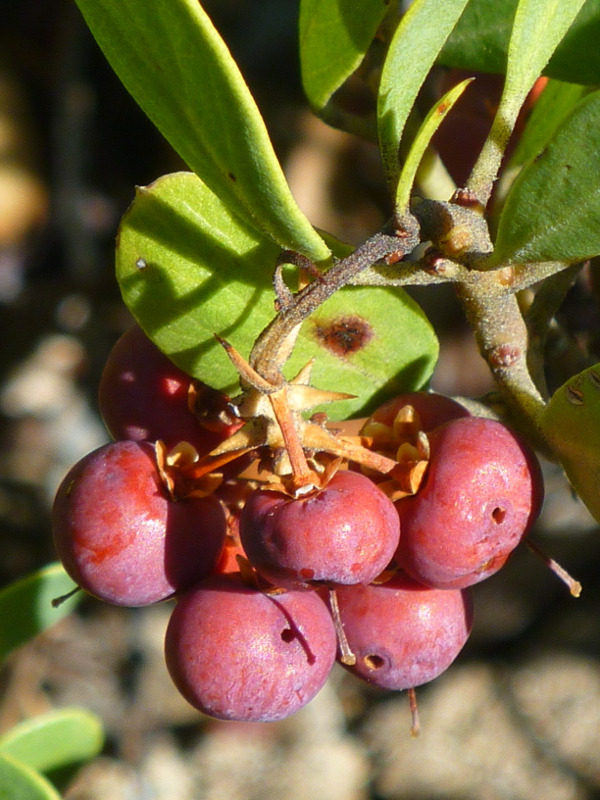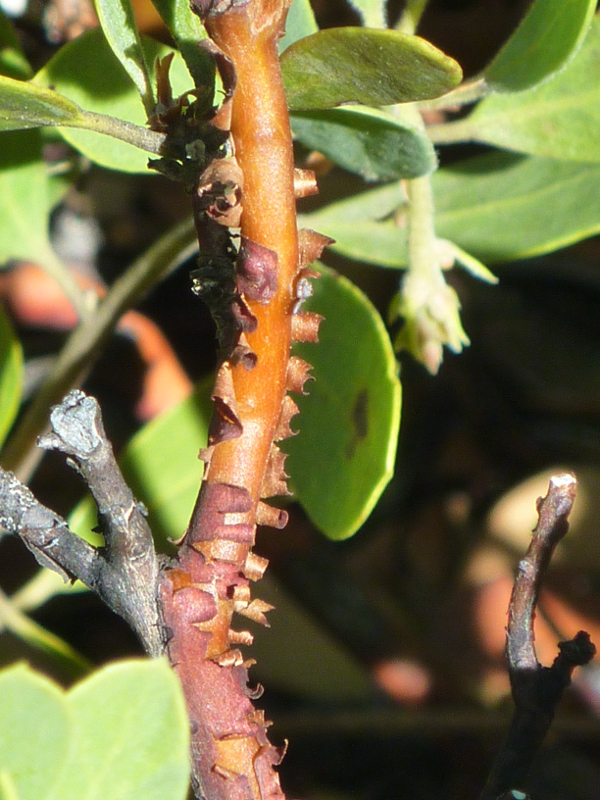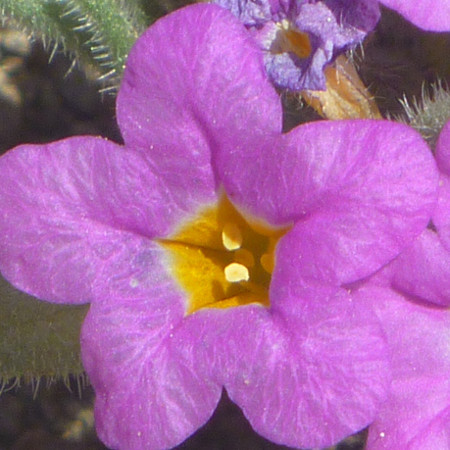
|

|

Pinemat manzanita berries: fruits for humans, other mammals and birds |

Old bark of a pinemat manzanita branch shedding away as curled flakes |
Pinemat manzanita
(Arctostaphylos nevadensis)
in the heather family
(Ericaceae)
is a low-growing evergreen shrub native to mountain ranges
of western North America. As its name suggests, it grows in
soil-covering mats. Such natural erosion-controlling mats are
found in the understory of coniferous forests—in the
Carson Range, for example. Pinemat manzanita
also can thrive on rocky slopes and within chaparral communities,
such as the one in which the shown photos were made:
the northwest-facing slopes of the
Sunrise Bowl of Tahoe-Donner, northwest of Truckee, California.
Manzanita is the
diminutive of the Spanish word for apple,
manzana. In fall, the ripe and red berries
of pinemat manzanita look indeed like “little apples.”
Bear, deer as well as small mammals and birds eat these fruits. Native Americans utilize(d) berries and leaves in various ways. Karok tribes are said to have used pinemat manzanita as antidote for poison oak affliction
[The Encyclopedia of Earth].
Pinemat manzanita is also cultivated for gardening and landscaping purposes (see
Garden Guide).
Mature manzanita bark is smooth and
orange-to-red colored—like
the pinemat manzanita bark in the right picture. During summer and fall
the outer, cinnamon-colored bark starts cracking and peeling away,
while a lighter colored layer of new bark is growing underneath. The slowly shedding bark
typically curls before coming off completely.







